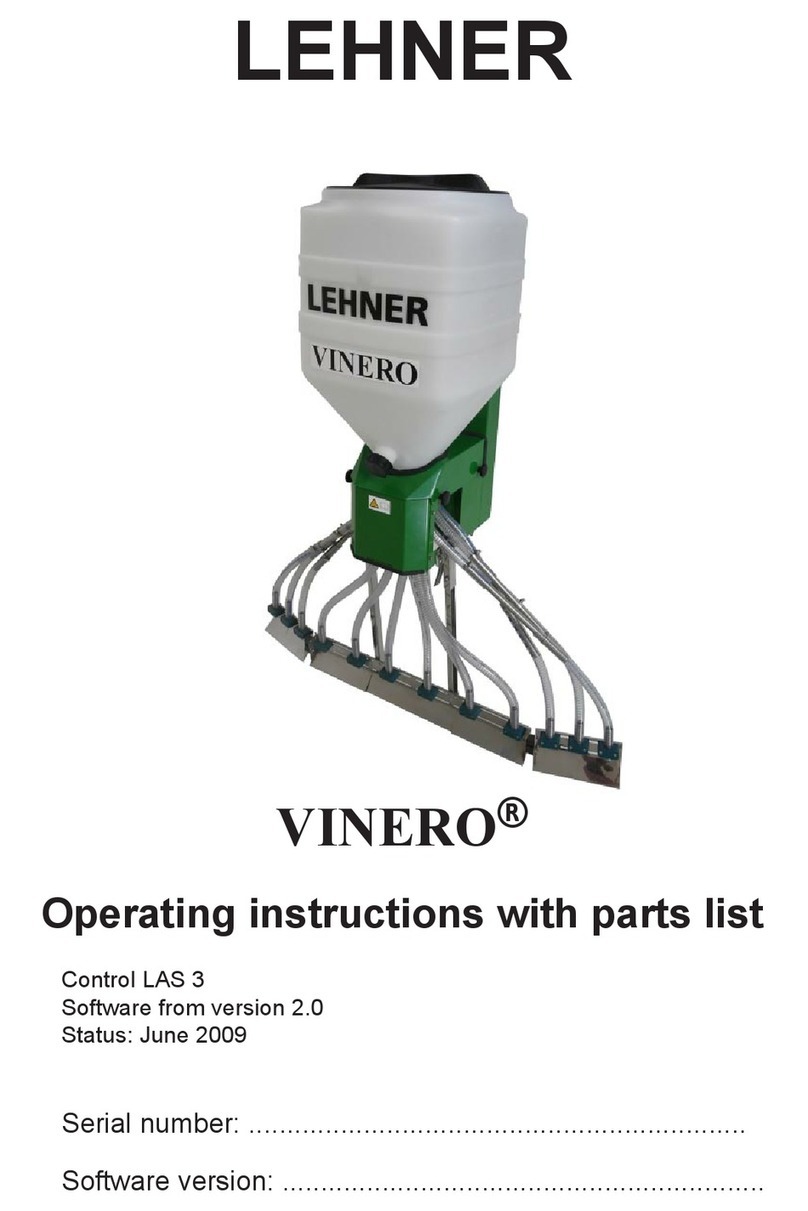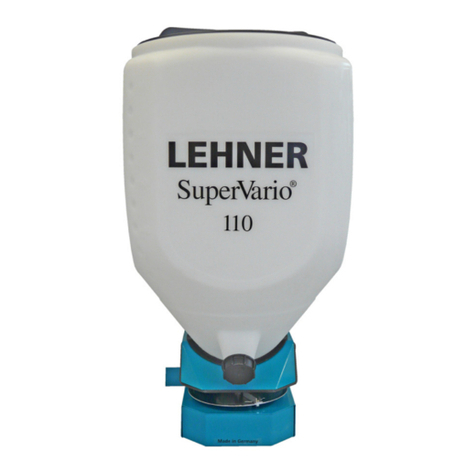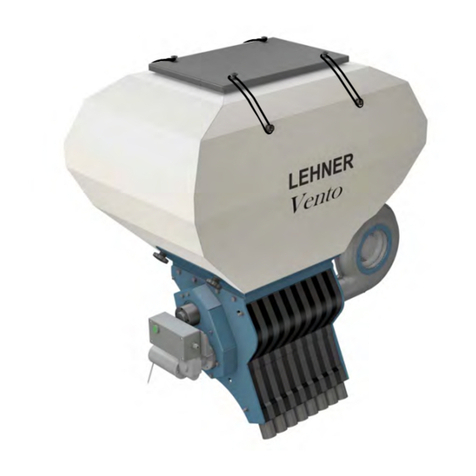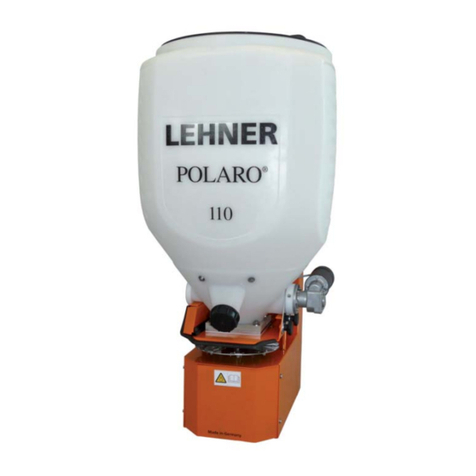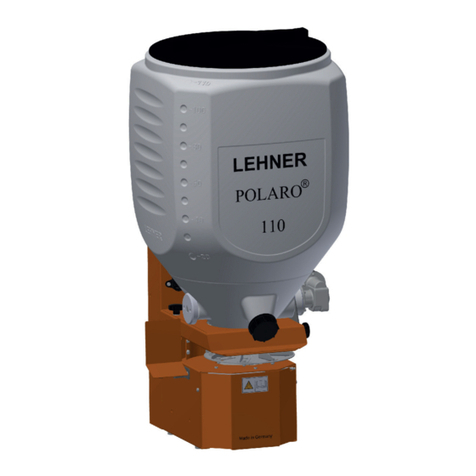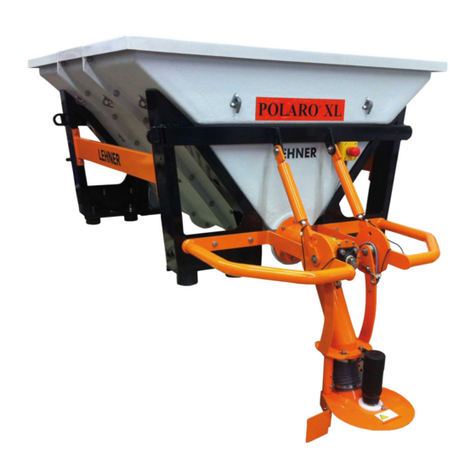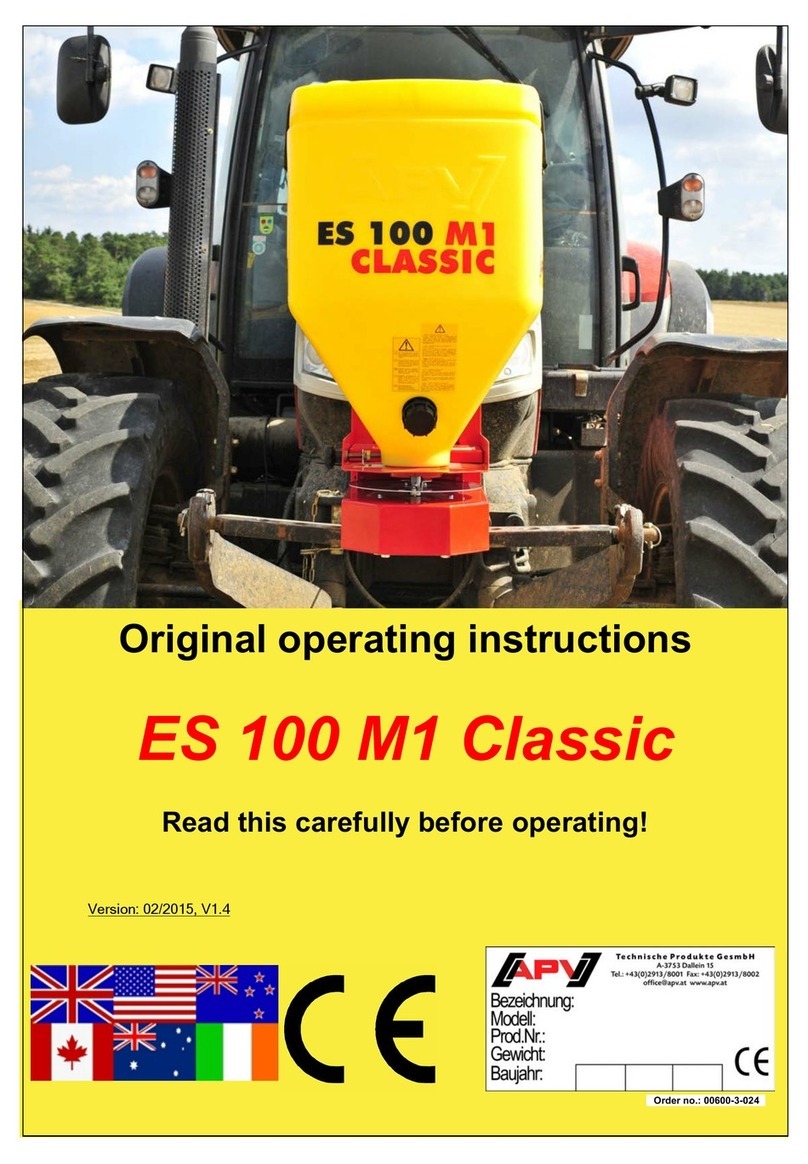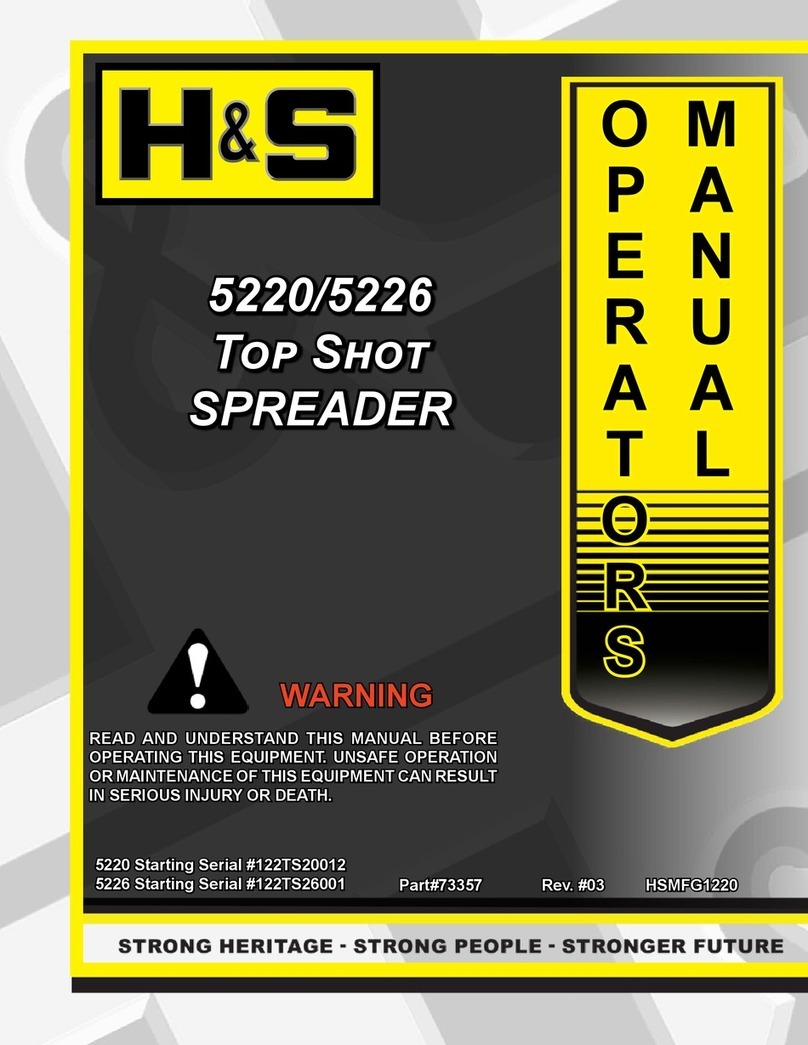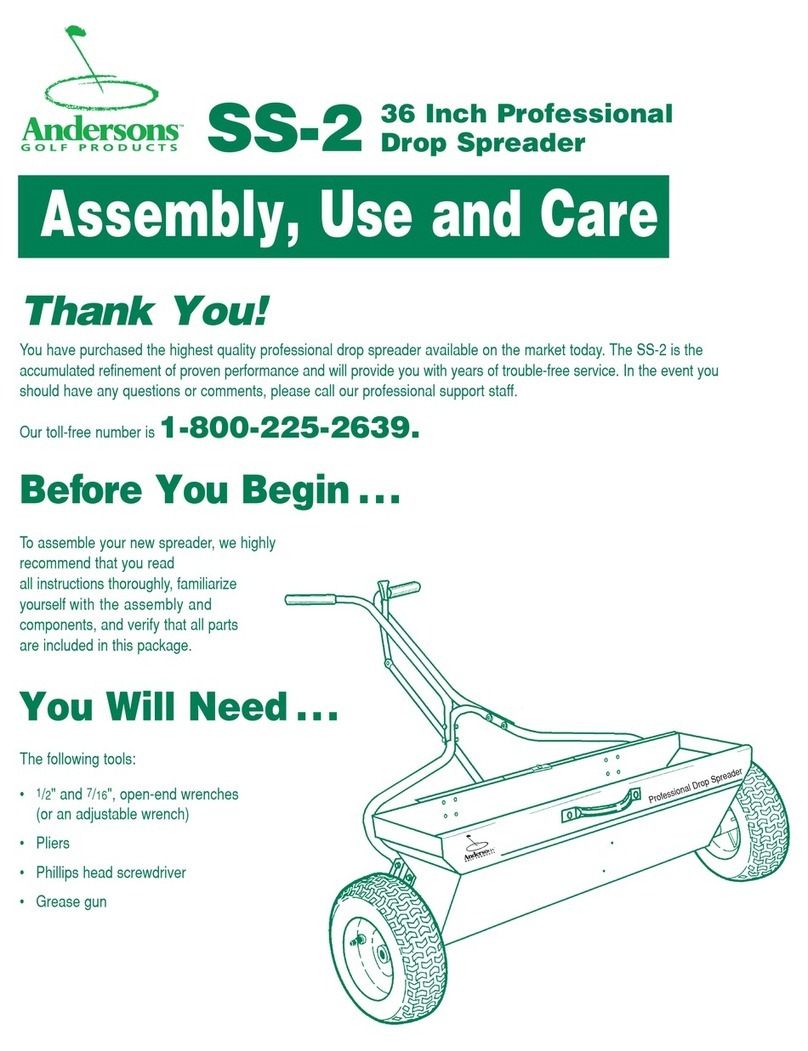
What you should know
Vento®1.0 5 / 52
1 What you should know
1.1 Foreword
With the Vento® you have acquired a high-quality and innovative product. Thank you for this expression of confi-
dence.
Thanks to its advanced design, meticulous material selection, state-of-the art manufacturing techniques and the
precision work of our employees, this equipment meets all efficiency, quality, reliability and value requirements.
Maintenance and cleaning as detailed in the operating manual ensure the safety and retain the value of your Ven-
to®.
1.2 About this operating manual
This operating manual is an important component of the spreader and must always be kept close to hand. All per-
sons who work with the spreader must read, understand and follow the operating manual.
Keep the operating manual in a safe place. If you sell your spreader, always provide this operating manual to the
buyer.
1.3 About your safety
Read through this operating manual carefully before starting operation. Comply with the instructions, warnings and
safety information. Always keep this manual to hand at the point of use.
•Observe the accident prevention regulations, safety and operating regulations and the regulations for environ-
mental protection.
•Observe all applicable standards and guidelines.
•Observe the safety instructions.
•Wear appropriate working and protective clothing.
•Avoiding injury to personnel or damage to vehicles incurring liability.
•Before operation, check that the spreader is safely and correctly attached to the carrier vehicle.
•Do not take the spreader into operation if there are technical safety defects.
•Make sure that technical safety defects are rectified immediately.
•When travelling on public roads and tracks used by agricultural vehicles, follow the applicable rules of the road.
•No other persons or animals are allowed to be in the spreading zone.
•Never open the hopper during operation.
•Disconnect the mains plug before maintenance, troubleshooting, repair and cleaning work on the spreader.
•Comply with the safety instructions on the fertiliser that you are using.
•It is essential to comply with the instructions of the pesticide or fertiliser manufacturer in question.
•After completing work, always perform a complete residual discharge of the spreader.
•Spreading tables and additional information about the fertiliser used can be requested from the manufacturer in
question.
•LEHNER Agrar GmbH does not accept any liability for storage and use of spreading material (seeds and fertilis-
er).
1.4 Notices used
Warning notices
Warning notices in this operating manual are identified as follows:


